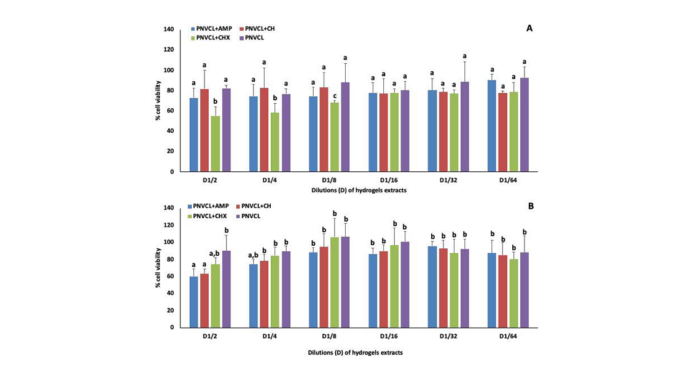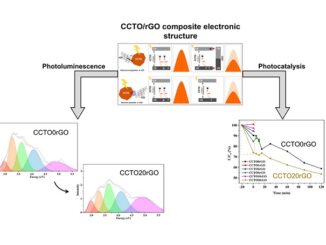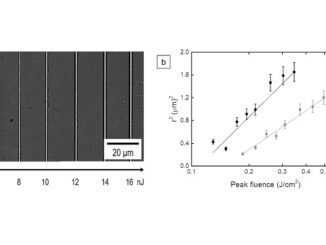
Microbiological Properties and Cytotoxicity of PNVCL Hydrogels Containing Flavonoids as Intracanal Medication for Endodontic Therapy
Abstract: This study aimed to evaluate the cytotoxicity and microbiological properties of poly (N-vinylcaprolactam)—PNVCL hydrogels containing flavonoids as intracanal medication for endodontic therapy. Antimicrobial activity of ampelopsin (AMP), isoquercitrin and rutin was determined against Enterococcus faecalis, Actinomyces israelii, Lactobacillus casei, Streptococcus mutans, and Fusobacterium nucleatum by the microdilution method. After synthesis and characterization by rheology, PNVCL hydrogels were loaded with AMP and controls calcium hydroxide (CH) and chlorhexidine (CHX), and determined the compounds release profile. PNVCL+AMP, PNVCL+CH, PNVCL+CHX were evaluated on multi-species biofilms and analyzed by Scanning Electron Microscopy (SEM) and Confocal Laser Scanning Microscopy (CLSM). Cytotoxicity was determined after fibroblasts exposure to serial dilutions of AMP and PNVCL hydrogel extracts. AMP was effective against all of the bacteria tested, especially against S. mutans, A. israelli and F. nucleatum. SEM and CLSM analysis showed that PNVCL + AMP caused a significant decrease and disorganization of multi-species biofilms and reduction of intracanal viable cells, superior to the other groups. AMP affected fibroblast viability at concentrations above 0.125 mg/mL, and extracts of PNVCL+AMP showed low cytotoxicity. In conclusion, PNVCL containing AMP demonstrated cytocompatibility and potent effect against multi-species biofilms and could be potential intracanal medication for endodontic purposes.
Author(s): Braga, G. P. d. A.; Caiaffa, K. S.; Pereira, J. A.; dos Santos, V. R.; Souza, A. C. A.; Ribeiro, L. d. S.; Camargo, E. R.; Prakki, A.; Duque, C.
J. Funct. Biomater.
Published: 17 December 2022
DOI: https://doi.org/10.3390/jfb13040305
CDMF
The CDMF, hosted at the Federal University of São Carlos (UFSCar), is one of the Research, Innovation and Dissemination Centers (RIDC) supported by the São Paulo State Research Support Foundation (Fapesp), and also receives investment from the National Council Scientific and Technological Development (CNPq), from the National Institute of Science and Technology of Materials in Nanotechnology (INCTMN).




